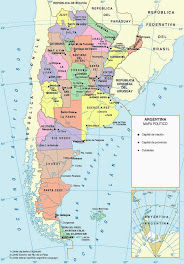They might not be everyone’s cup of tea, but if you have a thing for gnocchis (spelt ñoquis in Argentina), then at the end of each month, this is the country for you. That’s because the 29th of every month in Argentina is traditionally Ñoquis day.
Italian cuisine was first brought to Argentina when Italians began migrating here en masse in the nineteenth century.
The original influx of immigrants was made up principally of northern Italians who came to Argentina once it had won its independence from Spain in 1810. By the time cholera epidemics hit Italy in the 1830s, then again in the fifties, sixties and eighties, hundreds of thousands of Italians were choosing Argentina as a place to make their new home. During the first decade of the twentieth century alone, the Italian diaspora saw over 700,000 flood into the country to escape economic hardship in Italy.
And they didn’t only come with their hand gestures and their language, which managed to infiltrate the Spanish spoken in Argentina to such an extent that the intonation here is almost as musical as Italian and sets Argentine Spanish notably apart from other accents; but like all decent people from countries with exceptional cuisine, they came with their food.
 Local taste buds were titillated with pasta, pizza, ice-cream, breaded meats known as milanesas, and ñoquis; all of which quickly became part of the local Argentine diet. Italy's alcoholic beverages too, like Fernet Branca and Cinzano, remain very popular.
Local taste buds were titillated with pasta, pizza, ice-cream, breaded meats known as milanesas, and ñoquis; all of which quickly became part of the local Argentine diet. Italy's alcoholic beverages too, like Fernet Branca and Cinzano, remain very popular.Though the Italian food here has no doubt lost some of its original authenticity (Argentine pizza is thick based for example and more like a calzone), with sixty percent of all Argentines descending from those Italian families who brought it with them; the love for Italian cooking it seems, is in the blood.
And the 29th day of each month is the day for ñoquis.
It is not really clear how the tradition came about. Some suggest that the poverty in which the newly arrived Italians found themselves, left them so broke by the end of each month that the cheap, yet filling lumps of potato and flour were a sound economical option.
Others argue that it has to do with a young doctor called Pantaleón who legend has it left his home in Asia in the 8th century and performed miracles in northern Italy after converting to Christianity. The legend says that while on a pilgrimage, Pantaleón blessed a farmer who had shared what little food he had, and promised that the next year’s harvest would be plentiful. Which it was. When Pantaleón was canonized a patron Saint of Venice on the 29th of July, the farmers honoured him by eating ñoquis, a dish that represented the poor.
Whatever the origins, the custom became tradition in Argentina, and though nowadays it is becoming less fashionable, ñoquis were no doubt still served up in homes all throughout the country yesterday; and usually with a handful of peso notes beneath the plate for luck.










.jpg)









